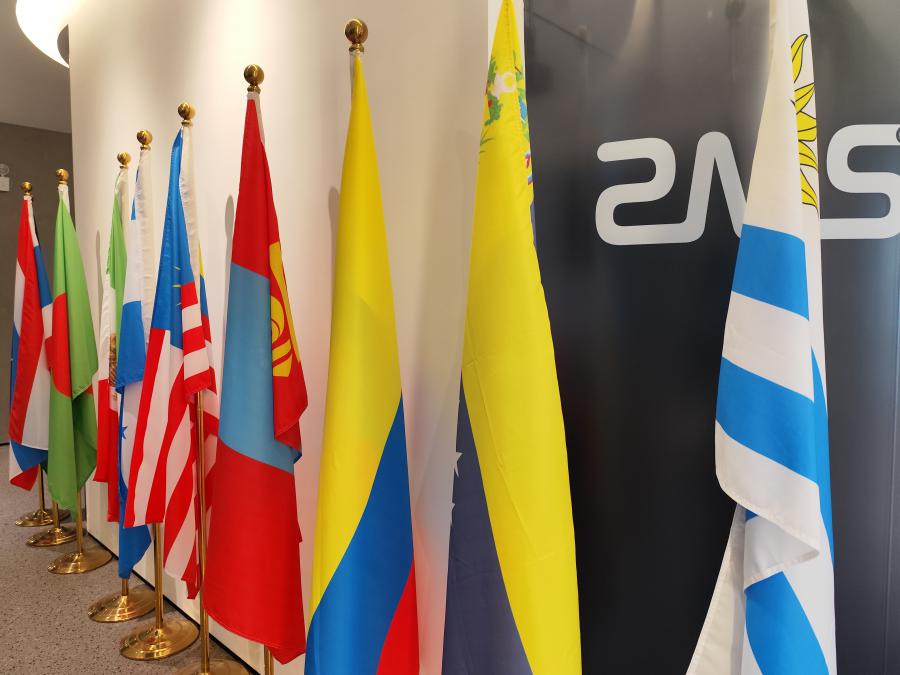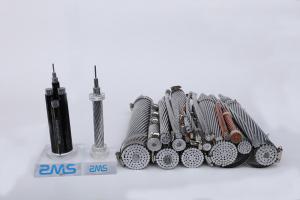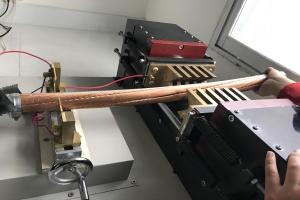
ZMS Cables Completes Cable Renewal for the World
DUBAI, UAE, May 23, 2024 /EINPresswire.com/ -- ZMS cable has upgraded the standards for many of the cables it produces to cover a wider range.
At the beginning of May 2024, ZMS Cables renewed the new standards for cables, counting and categorizing the existing cable standards. From upgrading production facilities to collaborating on projects with other companies, the cable specifications have been upgraded once again.
Global cable standards
The cable standards of various countries around the world not only regulate the technical parameters of wire and cable production but also make several clear provisions for its acceptance testing, quality supervision, and other aspects to ensure that the technical performance, service life, safety, and other aspects of the relevant products to meet certain requirements.
GB/T 5023-2008 Polyvinyl chloride insulated cables with rated voltage 450/750V and below
The standard for rated voltage 450/750V and the following polyvinyl chloride insulated cables, from the type, structure, technical requirements and test methods, etc., the following seven parts of the regulations:
General requirements
Test Methods
Unsheathed cables for fixed wiring
Sheathed cables for fixed wiring
Flexible cables (flexible cords)
Cables for elevator cables and flexible connections
Two-core or multi-core shielded and unshielded flexible cables
JB/T 8734-2016 "Rated voltage 450/750V and the following polyvinyl chloride insulated cable wire and flexible wire
The standard for rated voltage 450/750V and below polyvinyl chloride insulated cable wires and flexible wires of various types, specifications, technical requirements, and test methods, scope of application made clear provisions:
General Provisions
Cables and wires for fixed wiring
Flexible wires and cables for connection
Installation wires
Shielded wire
Elevator cables
GB/T 19666-2019 General Rules for Flame-retardant and Fire-resistant Wires and Cables or Optical Fiber Cables
The standard specifies the combustion characteristics of flame-retardant and fire-resistant wires and cables or optical fiber cables code, technical requirements, test methods, and acceptance rules, including halogen-free, low-smoke, low-toxicity, flame-retardant, and fire-resistant combustion characteristics.
The standard applies to halogenated, halogen-free, low-smoke, low-toxicity flame-retardant, and fire-resistant wire and cable or fiber optic cable products.
JB/T 10491-2022 Cross-linked polyolefin insulated wires and cables with rated voltage 450/750V and below
The standard specifies the product structure of wires and cables, test and technical requirements, delivery length, inspection, and acceptance rules, as well as signs and packaging.
The standard applies to the manufacture of cross-linked polyolefin insulated wires and cables with copper conductors for fixed wiring connections and electrical and electronic equipment connections with rated voltage 450/750V and below.
GB/T12706.1-2020 Rated voltage 1kV (Um=1.2kV) to 3kV (Um=3.6kV) cable
The standard specifies the structure, dimensions, and test requirements for extruded insulated power cables with rated voltages of 1kV (Um=1.2kV) and 3kV (Um=3.6kV).
The standard applies to extruded insulated power cables with rated voltages of 1kV (Um=1.2kV) and 3kV (Um=3.6kV) for fixed installations in distribution networks or industrial installations.
Not applicable to cables with special installation and operating conditions, such as overhead lines, mining industry, nuclear power plants (in and near containment), and underwater or propagation.
GB/T 9330-2020 Plastic Insulated Control Cables
The standard specifies the AC-rated voltage U0/U for 450/750V extruded polyvinyl chloride and cross-linked polyvinyl chloride insulation, polyvinyl chloride, polyvinyl chloride and halogen-free polyvinyl chloride hydrocarbon sheathed control cables product code and marking method, cable name and type specification, finished cable marking and insulation core identification, technical requirements, test methods and testing rules, use of the characteristics and packaging.
The standard applies to AC-rated voltage U0/U for 450/750V and the following control, monitoring circuits, protection lines, and other occasions of fixed laying of control cables.
GB/T 3048 "Electrical Performance Test Methods for Wires and Cables
The standard specifies the wire and cable electrical performance test general requirements, definitions, and test equipment for periodic calibration requirements.
The standard applies to a variety of power cables and electrical equipment with wire and cable electrical performance tests.
The Importance of Standardization of Cables
In an increasingly interconnected world, the standardization of cables has emerged as a crucial aspect of modern infrastructure, impacting everything from technological interoperability to economic efficiency and environmental sustainability. The diverse range of applications—spanning telecommunications, data centers, residential wiring, and industrial automation—highlights the need for consistent and universally accepted cable standards. This essay explores the multifaceted importance of cable standardization, examining its role in ensuring compatibility, enhancing safety, fostering innovation, reducing costs, and promoting environmental sustainability.
Ensuring Compatibility and Interoperability
One of the primary reasons for cable standardization is to ensure compatibility and interoperability among devices and systems. With the proliferation of electronic and electrical devices, the need for a common framework that allows these devices to communicate and function together seamlessly is paramount. Standardized cables facilitate this interoperability by providing a uniform set of guidelines and specifications.
For instance, the Universal Serial Bus (USB) standard has revolutionized the way devices connect and communicate.
Whether it is a smartphone, a printer, or an external hard drive, USB cables offer a consistent interface, allowing devices from different manufacturers to work together without compatibility issues. This uniformity simplifies the user experience, reduces the need for multiple types of cables, and supports a wide range of applications.
Enhancing Safety and Reliability
Standardization also plays a critical role in enhancing the safety and reliability of cable systems. Electrical cables, if not properly designed and manufactured, can pose significant safety hazards, including the risk of electrical fires and electrocution. Standards set by organizations such as the International Electrotechnical Commission (IEC) and the Institute of Electrical and Electronics Engineers (IEEE) establish rigorous safety criteria for cable design, materials, and performance.
These standards ensure that cables can withstand specified electrical loads, environmental conditions, and physical stresses. For example, standardized insulation materials are tested for their ability to resist heat, moisture, and chemical degradation, thereby preventing short circuits and other failures. By adhering to these standards, manufacturers can produce cables that meet stringent safety requirements, protecting both users and equipment.
Fostering Innovation and Technological Progress
While standardization provides a common framework, it also fosters innovation and technological progress. Standardized cables create a reliable foundation upon which new technologies can be developed and integrated. This is particularly evident in the realm of high-speed data transmission and telecommunications.
The development of Ethernet cables, for instance, has been guided by standards established by the IEEE. These standards have evolved to support increasing data rates, from 10 Mbps in the early days to 100 Gbps and beyond today. By providing a clear roadmap for development, these standards have enabled the telecommunications industry to innovate rapidly, meeting the growing demand for faster and more reliable internet connectivity.
Moreover, standardization encourages competition among manufacturers, driving innovation and improving product quality. Companies are motivated to develop superior products that meet or exceed the established standards, leading to advancements in cable technology and performance.
Reducing Costs and Improving Efficiency
Standardization also contributes significantly to reducing costs and improving efficiency across various sectors. When manufacturers adhere to common standards, economies of scale can be achieved, resulting in lower production costs. Standardized cables can be mass-produced, reducing the unit cost and making them more affordable for consumers and businesses alike.
Furthermore, standardization simplifies installation, maintenance, and troubleshooting processes. Technicians and engineers can work with a predictable set of components, tools, and procedures, reducing the time and effort required to install and maintain cable systems. This uniformity minimizes the likelihood of errors and compatibility issues, leading to more efficient and cost-effective operations.
The cost savings from using standardized cables can be substantial in industries such as construction and telecommunications, where large-scale installations are common. For example, the use of standardized coaxial cables in television and internet installations ensures that service providers can deploy their networks quickly and efficiently, reducing downtime and operational costs.
Promoting Environmental Sustainability
The environmental impact of cable production and disposal is another critical consideration where standardization can make a positive difference. Standardized cables are designed with sustainability in mind, incorporating materials and manufacturing processes that minimize environmental harm.
For instance, standards for electrical and electronic equipment often include guidelines for using recyclable materials and reducing hazardous substances such as lead and mercury. By following these standards, manufacturers can produce cables that are safer for the environment and easier to recycle at the end of their life cycle.
Additionally, standardization can lead to the development of more energy-efficient cables. For example, advancements in fiber optic cable technology, guided by industry standards, have resulted in cables that consume less power and offer higher data transmission efficiency compared to traditional copper cables. This not only reduces energy consumption but also lowers the carbon footprint associated with data transmission networks.
Newly Upgraded Standards for ZMS Cable
ZMS Cable attaches great importance to this standard upgrade, the company's main person in charge manager Liu said: that cable standard upgrades and comprehensive aims to greatly improve the level of sales and service, to be able to meet the needs of more projects around the world customers is the survival of the mission of the ZMS cable so far.
As of today, the upgraded cable standards cover the following areas:
Portuguese Standard
CABLES FOR INTERIOR USE
H07V-U
H07V-R
H07V-K
TRIPLEX H07V-U
TRIFLEX H07V-K
05VV-U
05VVH2-U
H05VV-F
INDUSTRIAL POWER CABLES
RV / XV / U-1000 R2V
RV-K
XAV / RVFV / U-1000 RVFV
RVSAV / RVSV
LSVAV / LSXAV
LVAV / LXAV
LXV / RV AI / U-1000 AR2V
XS / RZ Cu
LXS / RZ AI / Branchement
Turkish Cable Standards
Single Core Wire
H05V-U, H07V-U/R ( NYA ) 4
H05-VK, H07V-K ( NYAF )
500 V Cables
NYM, NVV 10
NYIFY-U
Armored Cables
NYRY / YVZ2V 19
NYFGBY / YVZ3V 22
NYCY / YVCV 25
NYBY / YVZ4V 28
N2XRY / YXZ2V 31
N2XFGBY / YXZ3V 34
N2XCY / YXCV 37
N2XBY / YXZ4V
ALUMINIUM CABLES
NAYY / YAVV 58
NA2XY / YAXV 58
AAC 61
ACSR 61
AAAC 61
ABC
Traditional and common cable standards owned by ZMS
1. RoHS Certification: RoHS is an acronym for Restriction of the Use of Certain Hazardous Substances in Electrical and Electronic Equipment (RoHS) Directive, which came into effect on July 1, 2006, in the European Union. The list includes lead Pb, cadmium Cd, mercury Hg, hexavalent chromium Cr6+, PBDE, PBBB, and other six hazardous substances, the use or presence of heavy metals, flame retardants PBDE, PBBB, and other electrical and electronic products are prohibited from entering the EU market. 2.
2. UL certification: UL is the Underwriters Laboratories Inc. Is currently the United States and even the world's authoritative civil safety testing and certification organization. It tests the safety of various materials, equipment, products, devices, and buildings for users. The development and promulgation of appropriate standards and norms to help reduce and prevent the occurrence of safety accidents; at the same time, it also breaks down technical barriers and obstacles to international trade, and promotes the development of international trade.
3. China CCC certification: China Compulsory Certification, known as "China Compulsory Certification", abbreviated as "CCC", is based on China's commitment to join the WTO and reflects the principle of national treatment. The principle of national treatment is the state-compulsory product certification using a unified logo. After implementing the China Compulsory Certification mark, will gradually replace the original implementation of the "Great Wall" mark and "CCIB" mark.
4. Canada CSA Certification: The Canadian Standards Association (CSA) was established in 1919, is the certification body of Canada, is also one of the world's famous certification bodies, and is committed to the development of industrial standards certification bodies in Canada. 5. Germany VDE Certification: The VDE testing and certification body is the German Institute of Electrical Engineers.
5. Germany VDE certification: The VDE testing and certification body is the German Institute of Electrical Engineers. VDE (referred to as VDE) belongs to an organization, that is directly related to the German national standards, is Europe in the world enjoys a high reputation as a certification body. 6.
6. British BSI certification: The British Standards Institution (BSI) was established in 1901, formerly known as the British Engineering Standards Board, and is one of the world's earlier established national standardization bodies. After more than 100 years of development, has been renowned around the world, is a set of standards for research and development, standards and technical information, product testing, system certification, and commodity inspection services for the integration of the five major business international standards service providers, to provide services for the world.
7. German GS Certification: The GS mark is a safety certification mark authorized by TUV, VDE, and other German Ministry of Labor agencies. GS in German means "Geprufte Sicherheit " ( certified safe ), which can also be " German safety ". GS certification is based on the German Product Safety Act ( GPGS ), following the European Union harmonized standard EN or the German Industrial Standard DIN testing a voluntary certification is recognized in the European market German safety certification mark. GS certification based on the German Product Safety Act (GPGS), by the EU unified standard EN or the German Industrial Standard DIN for testing a voluntary certification, is recognized in the European market, as the German safety certification mark. 8.
8. Korea KCS Certification: K-Tech, the Korean Electrical Appliance Manufacturers' Association, has adopted a separate technical specification for the certification of 17 categories of wire and cable products, and K-Tech and the Korea Testing Laboratory (KTL), a Korean certification body, have jointly introduced the Korea Standard for Wires and Cables (KCS).
Wire and cable is an electrician, electric power, and light industry essential supporting products, from ultra-high voltage transmission lines to household appliances, each link is inseparable from the wire and cable. It is a wide variety and, large volume, and needs to be strictly enforced when the use of safety. ZMS Cable always believes that we can only be stronger if we do better and more comprehensively!
ZMS Cable
ZMS Cable
+86 371 6782 9333
email us here
Visit us on social media:
Facebook
Twitter
LinkedIn
YouTube
Other
Today's release! ZMS Cable expedites the production of a wide range of aluminum wire and more.
Distribution channels: Building & Construction Industry, Electronics Industry, Manufacturing, Mining Industry, Telecommunications
Legal Disclaimer:
EIN Presswire provides this news content "as is" without warranty of any kind. We do not accept any responsibility or liability for the accuracy, content, images, videos, licenses, completeness, legality, or reliability of the information contained in this article. If you have any complaints or copyright issues related to this article, kindly contact the author above.
Submit your press release




